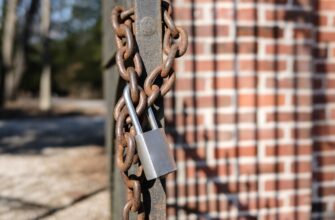Cold storage is a critical method for securing cryptocurrency assets, especially for long-term holdings. A backup crypto wallet in cold storage ensures your digital assets remain safe from online threats. This article outlines the best practices for managing and securing your cold storage wallet, including key steps, common mistakes to avoid, and frequently asked questions.
## Why Cold Storage is Essential for Crypto Security
Cold storage refers to keeping cryptocurrency offline, typically in a hardware wallet or a paper wallet. This method is far more secure than hot wallets (online wallets) because it minimizes exposure to hackers and malware. However, even cold storage requires careful management to prevent loss or theft. A backup crypto wallet in cold storage is a crucial step in this process, ensuring your private keys and assets are protected.
## Key Best Practices for Backup Crypto Wallets in Cold Storage
1. **Use a Hardware Wallet**: Hardware wallets are the most secure option for cold storage. They store your private keys offline and only connect to the internet when necessary. Always choose a reputable brand, such as Ledger or Trezor.
2. **Secure Your Physical Device**: If you use a hardware wallet, store it in a safe, fireproof location. Avoid leaving it in plain sight or in a vulnerable environment.
3. **Backup Your Seed Phrase**: The seed phrase is a sequence of words that can regenerate your wallet. Store it in a secure, offline location, such as a safe or a trusted friend’s home.
4. **Encrypt Your Backup**: Use strong encryption to protect your backup files. This prevents unauthorized access in case your backup is stolen or lost.
5. **Implement Multi-Factor Authentication (MFA)**: Enable MFA for your wallet and any associated accounts. This adds an extra layer of security against phishing and brute-force attacks.
6. **Regularly Update Software**: Keep your wallet software and operating systems updated to patch vulnerabilities and ensure compatibility with new blockchain protocols.
7. **Offsite Storage**: Store backups in a secure, offsite location. This prevents loss due to natural disasters, theft, or physical damage to your primary storage.
## How to Implement These Best Practices Effectively
To ensure your cold storage wallet remains secure, follow these steps:
– **Choose a Reputable Wallet Provider**: Research and select a trusted hardware wallet or software wallet that offers robust security features.
– **Create a Secure Backup Environment**: Use a dedicated, offline computer for creating backups. Avoid using devices that are connected to the internet or other networks.
– **Test Your Backup**: Verify that your backup is functional by restoring it to a test environment. This ensures your seed phrase and private keys are correctly stored.
– **Document Your Process**: Keep a detailed record of your backup procedures, including the location of your seed phrase and the storage method for your hardware wallet.
– **Review and Audit Regularly**: Periodically review your security practices to ensure they align with the latest industry standards and threats.
## Common Mistakes to Avoid When Backing Up Cold Storage Wallets
1. **Not Backing Up the Seed Phrase**: Failing to store your seed phrase securely can result in permanent loss of your assets.
2. **Storing the Device in an Unsafe Location**: Leaving your hardware wallet in an accessible or vulnerable location increases the risk of theft.
3. **Using Weak Passwords**: Weak passwords can be easily guessed or cracked, compromising your wallet’s security.
4. **Ignoring Software Updates**: Outdated software may contain vulnerabilities that hackers can exploit.
5. **Losing Track of Your Backup**: If you don’t keep track of your backup, you may lose access to your assets in the event of a disaster.
## Frequently Asked Questions (FAQ)
**Q: How often should I back up my cold storage wallet?**
A: It’s recommended to back up your wallet at least once every six months. However, if you frequently transact or update your wallet, consider more frequent backups.
**Q: Can I use a phone as a cold storage wallet?**
A: While some phones support cryptocurrency apps, they are not designed for long-term cold storage. Phones are more vulnerable to hacking and physical damage compared to hardware wallets.
**Q: What if I lose my backup key?**
A: Losing your backup key can result in permanent loss of your assets. Always store your backup in multiple secure locations and ensure it’s not easily accessible to others.
**Q: Is it safe to store my cold storage wallet in a safe?**
A: Yes, storing your hardware wallet in a safe is a common and effective practice. Ensure the safe is fireproof and has a secure lock.
**Q: How do I verify my backup is working?**
A: Test your backup by restoring it to a test wallet. This ensures your seed phrase and private keys are correctly stored and functional.
By following these best practices, you can significantly reduce the risk of losing your cryptocurrency assets. Cold storage is a vital component of any secure crypto strategy, and proper backup procedures are essential to maintaining its effectiveness. Always prioritize security, stay informed about the latest threats, and regularly review your practices to ensure your assets remain safe.








